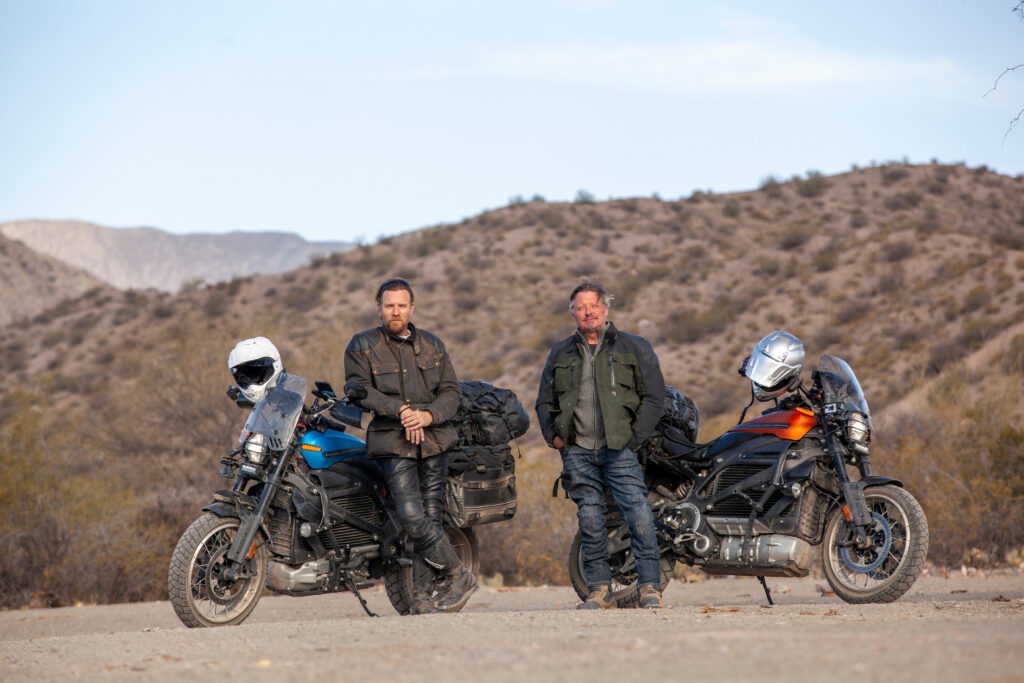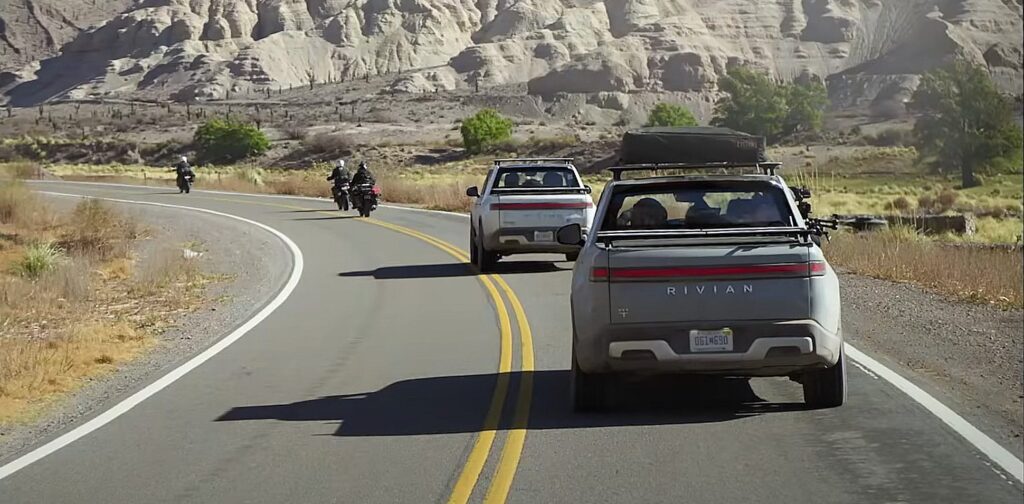Long Way Up review
- PostedPublished 10 September 2020
Have you been watching Long Way Up, in which actors Ewan McGregor and Charley Boorman travel 21,000km from the southernmost tip of Argentina to Los Angeles on electric motorcycles?
It’s available on Apple TV+, the company’s Netflix style streaming subscription service, to which you can get a year of free access if you have recently purchased a new Apple device.
A follow-up to Long Way Round and Long Way Down, this time the protagonists ride Harley-Davidson LiveWire electric motorcycles that have been specially adapted to adventure bike spec while the support crew are in prototype Rivian R1T electric utes.
Despite Rivian having installed charging infrastructure along the route in preparation, the first stages of the journey are fraught with charging-related issues as the team grapple with unseasonably cold temperatures that reduce range and slow or even prevent charging.
This is the flipside of EV thermal management; because the LiveWire’s battery is air-cooled, it has no ability to optimise temperatures for charging or cold weather range.
In addition, some of the remote rest stops and overnight stays that offer to charge the vehicles find they cannot supply enough current or lack a reliable enough connection to do the job.
A shaky start then, but at least the Rivians get to demonstrate their fascinating ‘tow charge’ feature that can restore the battery from empty to 80 per cent in just one hour while the vehicle is being towed.

Of course, the tow vehicle is likely to be burning a lot of extra fossil fuel to overcome both the weight of the Rivian and the resistance of its four electric motors as they turn kinetic energy into electricity, but it is a handy way to get out of charging dilemmas in remote locations.
With their extra space and payload capacity over the bikes, the big Rivian utes have sophisticated triple-loop thermal management systems for ensuring the batteries, motors and inverters remain in their respective temperature sweet spots.
“If we’re in a very cold environment, we can heat up the battery temperature to maximise its efficiency and therefore the vehicle’s range,” Rivian VP of propulsion Richard Farquhar told Charged magazine.
“To bring the best out of battery electric vehicles, we need excellent thermal control and thermal management, and that’s something we focused on a lot to really maximise performance and efficiency,” said the former McLaren Automotive powertrain director.
In fairer weather conditions, and as McGregor and Boorman become accustomed to their battery powered bikes, the heavily laden electric Harleys manage a respectable 200km range.

But given the clear promotional investment from Harley-Davidson and Rivian in supplying prototype vehicles for this high-profile TV show, it is a surprisingly warts-and-all insight into the challenges of using EVs for such an ambitious expedition.
In addition, the team make no secret of or excuses about the presence of a diesel Mercedes-Benz Sprinter van and conventional petrol Harley-Davidson among the support vehicles, along with industrial diesel generators being trucked in and joining the convoy when battery charging becomes a significant issue in remote and freezing cold areas.
But as Boorman points out during one episode, it is heartening that an EV trip of this magnitude can even be conceived at this point in time.
As we know, the rapid rate of technological development will no doubt mean that within a decade the challenges faced by McGregor and Boorman will look positively primitive.
I wonder how long it will be before the first electric motorcycle crosses the Simpson Desert? And which brand of motorcycle will achieve that feat?
- CategoriesIn SightGlass
- Tagselectric vehicles, EV, SightGlass News Issue 21

